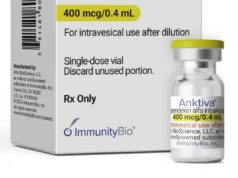
When you think about industries adopting the latest automation technology, banking, insurance, and retail organizations are likely to be the earliest adopters. Healthcare and hospitals typically lag, hesitant to change due to the number of regulations, patient privacy and safety concerns, and reimbursement constraints. In just a few short months, Covid flipped the entire healthcare industry on its head. As many hospitals were reeling from revenue losses and a simultaneous surge in operating expenses during the pandemic, this situation provided the long-overdue trigger to innovate.
With patients desperate for accurate medical information, symptom screening, and vaccine appointment scheduling, providers were inundated with calls and struggling to respond. Many hospitals turned to technology and automation to relieve the burden. For example, virtual assistants and chatbots help answer patient inquiries without burning out nurses and contact center staff. These virtual assistants allow patients to engage with hospitals at any time to enable self-service care navigation and triage. As we move to the next normal in healthcare, administrators now have new tools at their disposal to rethink their service delivery and patient engagement strategy.
Below are five lessons that healthcare providers learned during this time of rapid transformation, along with takeaways for other industries solving real-world problems.
- Collaboration is key
Close business relationships enable rapid and impactful innovation. We’ve seen collaboration between healthcare providers, technology companies, pharma, and government to innovate drastically with unprecedented speed. The pandemic created immense pressure on our healthcare system, driving providers to innovate and create new processes. To do this, hospitals looked to vendors to act as an extension of their team. Health systems and vendors rapidly co-developed new solutions to meet needs for remote access to care and reducing in-person touchpoints. It’s the close collaboration and alignment between organizations, partners, suppliers, and staff that will continue to move us forward.
- Reduce barriers to information
With the added influx of patient Covid inquiries, hospitals soon discovered weaknesses in their existing care navigation processes. Call centers weren’t able to handle patient concerns such as symptoms, testing, and vaccinations. Many systems implemented conversational AI chatbots on their websites or patient portals to address this challenge, allowing patients to immediately self-navigate to the information or tools they needed. These AI chatbots can screen patients for symptoms, direct them to local urgent care, or schedule a virtual visit. Giving their customers direct access to what they need when they need it, resulted in a win for both, consumers and hospitals. Using AI technology to fill in the operational gaps drives a better customer experience that can reduce the operational burden and workload on your staff at the same time.
- Stay agile
The pandemic shrouded the future in uncertainty. Not only was Covid itself unexpected, but there was also uncertainty around how long it would last, unforeseen peaks, vaccine timelines, and much more. Adopting an agile mindset and methodology helped healthcare organizations to handle external change. To move quickly, hospitals had to assemble cross-functional teams with members from various disciplines to enable rapid decision making and ensure buy-in across the organization. While healthcare has historically been slow to change, adopting an agile mindset and process during the last twelve months has improved patients’ and healthcare staff’s experiences.
- Improve ease of use
As we begin to emerge from the pandemic, healthcare organizations continue to roll out digital tools to communicate and connect with patients. Many patients have been reluctant to see their doctor for preventive care and regular check-ups. As a result, it is vital to re-engage them now in their health and to make doing the right thing as easy as possible for them. Allow patients to engage on their terms – from home or in the evening after work if desired. Remove the friction introduced by complicated web or mobile apps, which may be intimidating for some patients. For example, chatbots can provide a natural and conversational way for people to interact and improve access to care for patients of all ages and levels of tech-savviness. Even as brick and mortar locations are slowly re-opening, consumers will continue to expect the convenience of digital access they experienced during the pandemic.
- Successful technology adoption requires strong communication
Hospitals that communicated broadly and consistently to their patients have seen the most value capture and efficiency gains from their technology investments during the pandemic. Clear communication about new processes or digital tools builds trust, sets the right expectations, and encourages adoption by the community over time. Emphasizing patient benefits helps users understand the reason for change and why it makes sense to use a new tool. Encouraging patients to provide feedback and suggest improvements can also be a valuable source of learning for effective solution development and iteration. Another critical driver of success lies in internal communication. Hospital systems are large, complex organizations. A new process or digital tool may impact several departments and hundreds of team members. Thus, being transparent about changes is crucial to creating organizational buy-in for the adoption of new technology. Taking extra care to socialize and communicate new technology changes internally and externally can pay large dividends.
In closing, as difficult as the last year has been for the healthcare industry, it was also an unprecedented opportunity to change how healthcare is delivered. As an industry historically slow to adopt new technology, healthcare has flipped the narrative during the pandemic. We have seen incredibly fast innovation and adoption of new technology over the last year, using tools not just to fill process gaps but to deliver a better patient experience. Collaboration, ease of access, and strong communication will ensure that these technologies deliver lasting impact for us all. While change is difficult to adapt to, greater customer engagement and internal productivity are two goals that apply universally to organizations across all industries.








